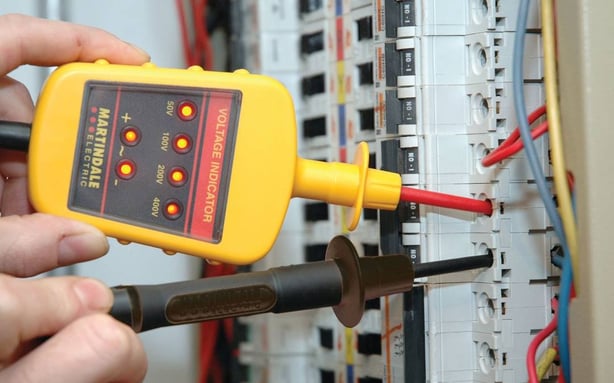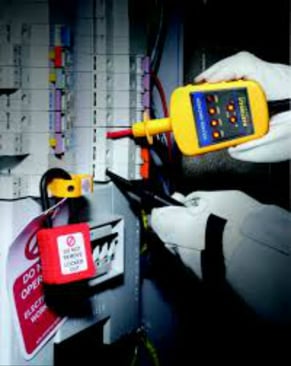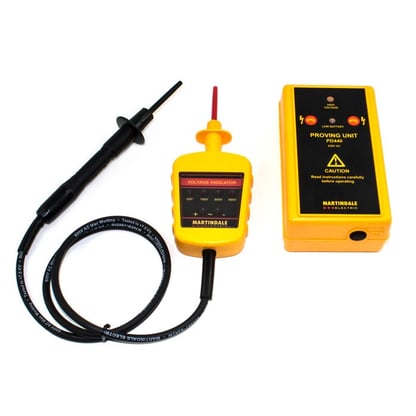
In conjunction with our partners Martindale Electric, we plan to bring you regular content around #ElectricalSafety in the workplace.
Our first article talks about the need for having the correct tools to ensure yours and others safety.
Correct Safe Isolation Procedures for Electrical Safety
Safe isolation procedures are in place to ensure that workers on site are not exposed to danger when working on or near live electrical systems. There are many reports where these procedures have not been followed correctly and sadly this has resulted in needless loss of life.
One such report involves a large electrical contractor, where a circuit had been labelled as not in use. The engineer working on the system did not have the necessary equipment to prove the system was dead. As a result he came into contact with a live conductor and was killed. The company in question was found guilty of failing to provide the right equipment and fined.
What equipment is required for safe isolation in Ireland & the U.K?
The Electrical Safety First Guidance states that “…The point of isolation should be locked off using a unique key or combination retained by the person carrying out the work or the appointed person, and a caution notice attached to the point of isolation.
Where more than one operative is working on circuits supplied from an isolated distribution board, a multi-lock hasp can be used to prevent operation…”
Lockout/Tagout Kits

We have a range of lockout/tagout kits, available to ensure you have all the necessary equipment to lock out the circuit being worked on. A basic kit should include the following:
- Selection of MCB & breaker locks
- Padlock with a unique key or combination
- Hasp for when more than one person is working on a system
- Lock out tags & warning labels
Note that the padlock must have a unique key or combination. This should be held by the person carrying out the work to prevent anyone else from removing the lock and inadvertently activating the circuit. Most combination padlocks have a default setting of zeroes, so if you are using this type of lock, ensure the combination has been changed prior to use.
Once the breaker has been locked off correctly, a warning tag should be attached to clearly identify that the circuit has been locked off and is currently being worked on.
Locking off the circuit correctly is just one part of the procedure. Before carrying out any work on the circuit, you should also verify that the circuit is definitely dead before proceeding. Circuits are frequently mis-labelled so there is no certainty that the correct circuit is locked off. In order to do this, you should use a dedicated voltage indicator and a proving unit.
What is the correct equipment for proving dead?

As Electrical Safety First states, you should use a dedicated voltage indicator and a proving unit when carrying out this procedure. It is important to note that the voltage indicator MUST be able to work without the need for a battery, if you are using a device that needs a battery in order to work and the battery is flat, then you will not be able to prove if the circuit is dead or not!
The procedure for proving dead is to take your voltage indicator and check it against a known source, such as a proving unit, then test the circuit, then test the voltage indicator against the known source again to prove the tester has not failed during testing.
Whilst you can use a known live source to test your voltage indicator, we recommend using a dedicated proving unit. The reason is that the known live source will only light some of the LEDs on the tester, whereas a proving unit will ensure that all LEDs on all ranges are working, again safeguarding against incorrect readings due to a blown LED. In addition, there may not be a known live source near the area you are working, so by having a proving unit with you, you’ll never have this problem.
Voltage indicators should be proved using a known source both before and after testing the circuit.
Why can’t I use a Multimeter or non-contact voltage detector to prove dead?
Firstly, the use of Multimeters or non-contact voltage detectors is advised against in the HSE guidance and the use of these has resulted in accidents in the past.
The reason why a Multimeter is not suitable is that it is all too easy to select the wrong range. In addition the Multimeter relies on battery power to function, thus there is a great margin for error in making a false “dead” reading on a live circuit.
Non-contact voltage detectors also require a battery in order to work, however they are typically sensitive to other signals, such as static electricity. In addition it is impossible to prove this type of device is working correctly with a standard proving unit, a dedicated proving device would be required. Whilst these units can be used to detect live cables, they cannot reliably be used to prove dead.
We Have The Martindale Safety Test Equipment Catalogue Available For FREE Download
Safe Isolation - Multi Meters - PAT Testing - Socket Testers - Fuse Finders/Cable Detectors & Much More
or, Get In Touch
Talk to our team today about electrical safety in your workplace, site or plant...







